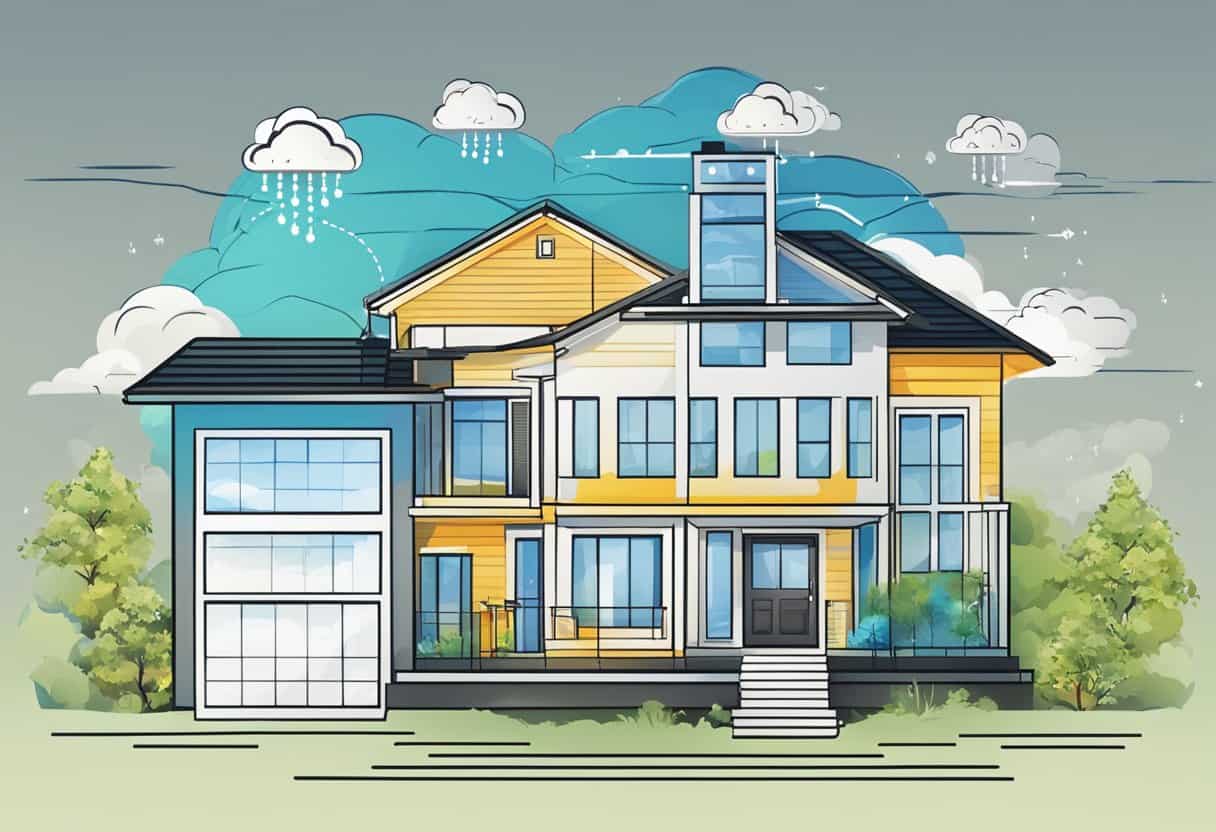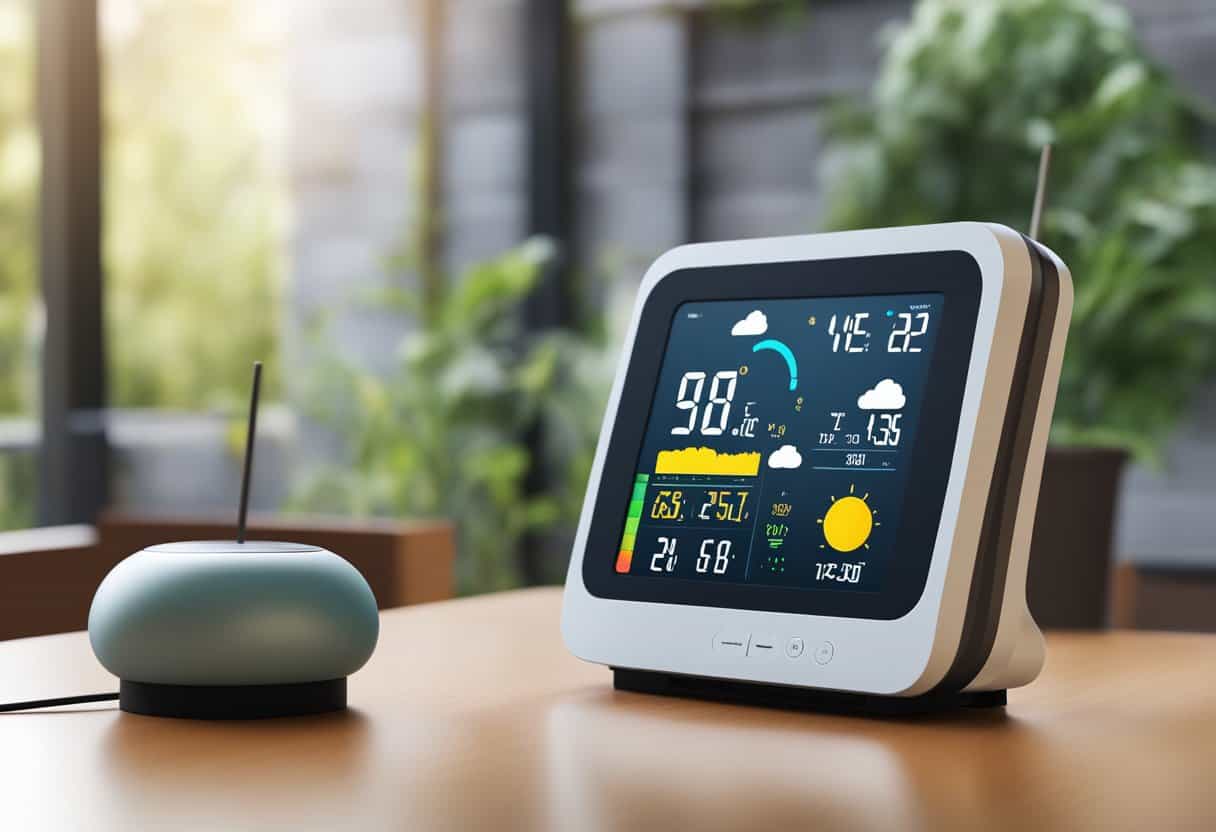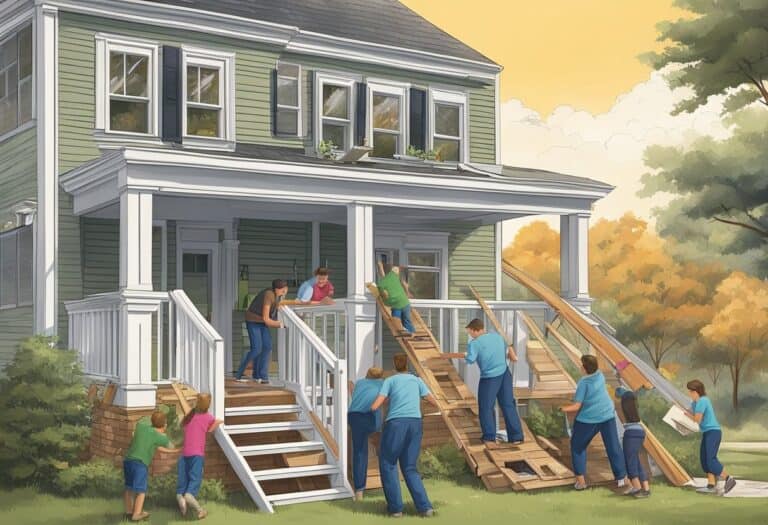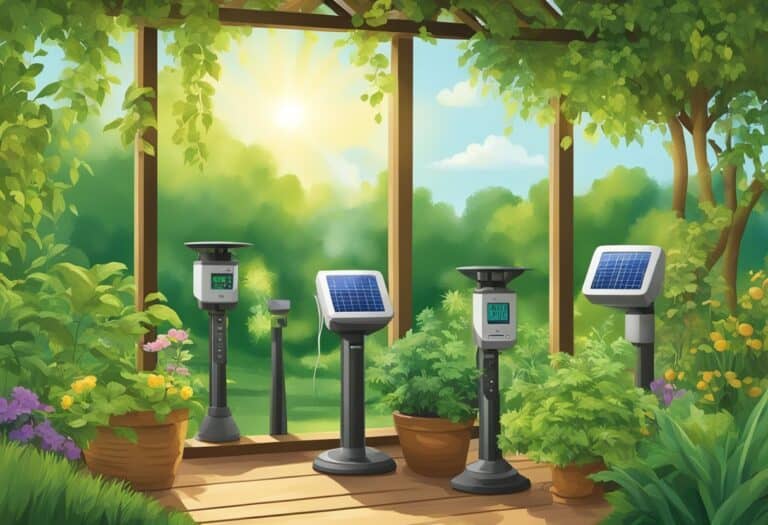Smart home weather stations are an integration of technology and convenience that allow you to monitor environmental conditions around your home with precision and ease.
Equipped with a range of sensors, these devices provide real-time data on temperature, humidity, barometric pressure, and more, which can be vital in planning your day or managing your home’s heating and cooling systems efficiently. Whether you are a hobbyist, a gardening enthusiast, or simply someone who likes to stay informed, a smart home weather station can be a valuable addition to your domestic setup.
As the technology evolves, the features of these weather stations have become increasingly sophisticated. Not only do they measure basic meteorological parameters, but many also offer advanced sensor technology that can detect rainfall amounts, wind speed, and direction. Connectivity plays a crucial role too, allowing for seamless integration with other smart home devices and enabling you to access weather data from anywhere through your smartphone or other digital platforms.
Furthermore, proper installation and maintenance are key to ensuring accurate data collection and long-term reliability.
Upgrade your home with a smart weather station! Track temperature, humidity, wind, and more in real-time. Plan your day, save energy, and stay safe. Control your smart home based on weather – dim lights at dusk, cool things down when it heats up. Your own window to the world, right outside your door.
Essential Features of Smart Home Weather Stations
Smart Home Weather Stations bring detailed climate monitoring to the comfort of your home, allowing you to track local weather conditions with precision.
Temperature and Humidity Measurement
Your smart home weather station is equipped with sensors to measure both indoor and outdoor temperature as well as humidity levels. This feature ensures that you can monitor climate conditions within your home for comfort and outside to plan your day accordingly.
Atmospheric Pressure Tracking
Barometric pressure is another critical data measurement provided by your home weather station. Precise sensors detect pressure changes, which are crucial for forecasting weather conditions and understanding atmospheric trends.
Precipitation Detection
Rainfall is captured and quantified using your weather station’s rain gauge. Knowing the amount of rainfall can be beneficial for gardening, planning outdoor events, and observing patterns in your local weather.
Wind Measurement Capabilities
Equipped with an anemometer, your home weather station measures both wind speed and wind direction. This information is invaluable for understanding and predicting weather systems movement, ensuring that you are well-prepared for any wind-related weather events.
Advanced Sensor Technology
Your weather station’s competency hinges on the advanced sensor technology it embodies, ensuring that the data you receive is both accurate and detailed. High-quality sensors are the cornerstone of a reliable weather station like the Ambient Weather WS-2902C, which uses these technologies to track a variety of environmental elements.
Solar and UV Radiation Sensors
Solar and UV sensors measure the sun’s intensity and the ultraviolet (UV) radiation level in your environment. Accuracy is vital, as these readings affect not just weather predictions but also solar panel efficiency and UV exposure advisories. The Ambient Weather WS-2902 leverages these sensors to provide you with precise data regarding solar radiation, essential for your smart home ecosystem to make informed decisions.
Lightning Detection Systems
Lightning detection systems are integral to your safety during thunderstorms, giving you early warnings of nearby lightning strikes. These systems utilize state-of-the-art sensor arrays to detect the electromagnetic signatures that lightning produces. Such outdoor sensors can be found in advanced weather stations, providing you with real-time alerts and helping you to mitigate potential risks associated with severe weather conditions.
Connectivity and Smart Integration

In the realm of smart home technology, your weather station’s ability to seamlessly connect and interact with other devices is crucial. This integration transforms how you interact with your home’s environment, ensuring up-to-date weather information informs your smart home’s system decisions.
Wireless Data Transmission
Wireless connectivity is a fundamental component of modern smart weather stations. With Wi-Fi connectivity, data about current weather conditions is transmitted in real-time, directly to your smartphone or weather app. Most systems operate on the 2.4 GHz frequency, offering a stable wireless transmission range that can vary based on environmental factors and the design of the weather system. However, a typical range can often span up to 100 meters, ensuring reliable communication between the outdoor sensor array and your smart home’s hub or router.
Moreover, some weather stations can connect to the Ambient Weather Network, a platform where you can share and access weather data from a global community. This feature not only promotes communal knowledge but also augments your local weather predictions with broader environmental data.
Compatibility with Smart Home Devices
To maximize the potential of your smart weather station, it must be compatible with the broader ecosystem of your smart home devices. Here’s how compatibility plays a vital role:
-
Smart Home Support: Your weather station should support integration with popular smart home assistants such as Amazon Alexa, Google Assistant, and services like IFTTT. This compatibility allows for voice-activated queries about the weather or automations that adjust your home’s settings based on real-time data.
-
Wi-Fi Connection: Make sure your device supports secure Wi-Fi connection protocols to prevent disruptions and maintain consistent performance. This ensures your weather system’s data benefits your entire smart home network.
-
App Integration: The accompanying app not only displays weather data but can also integrate with other smart home devices. Through this, weather-triggered scenarios can adjust lighting, temperature, or even water the garden according to the forecasted conditions.
By ensuring your smart weather station is adept in both wireless data transmission and smart home device compatibility, you foster a more responsive and intelligent home environment.
Data Display and Accessibility
When you own a smart home weather station, how you receive and interpret data is crucial. Today’s devices offer an array of display and accessibility options, ensuring that you can monitor weather conditions conveniently and accurately.
LCD Screens and Visual Displays
Your Ambient Weather WS-5000 or WS-2000 comes equipped with an LCD screen that presents real-time data with clarity. The visual displays on these models are designed to show you a variety of weather data, including temperature, humidity, wind speed, and rainfall, in an easy-to-read format. The high-resolution LCD also allows for customizable layouts, giving you the flexibility to view the data that’s most important to you first.
Mobile and Web App Interfaces
In an increasingly connected world, mobile and web applications are essential for on-the-go data accessibility. Weather apps, such as Weather Underground, enable you to access your weather station’s data anytime, anywhere. With a mobile app, you can receive instant notifications on your smartphone about changing weather conditions, ensuring you’re always informed. Tailored data analytics visible on these platforms provide you with insights beyond basic weather updates. The integration of your weather station with such apps ensures a more connected and informed experience.
Installation and Maintenance
When setting up your smart home weather station, careful consideration of where and how you install the device is crucial to ensure accurate data and longevity. Proper installation not only maximizes the features of your weather station but also contributes to its durability and ease of use.
Mounting and Location Considerations
Location is paramount for a weather station. To capture accurate climate data, position your station away from obstructions like buildings or trees that can affect readings. An open area in your backyard typically offers the best exposure to ambient conditions. Ensure the mounting surface is solid and stable, keeping the station level for optimal operation. Most weather stations feature an easy setup, with a preference for north-facing installation to align with meteorological standards.
Durability and Longevity
Your weather station’s durability is a direct reflection of its construction quality and installation precision. Choose a model with a strong warranty and robust materials capable of withstanding harsh weather conditions. Maintenance is minimal, usually requiring only periodic cleaning and battery checks or replacements. With durable equipment, you can ensure consistent performance and reduce the need for frequent repairs, regardless of the climate challenges in your region.
Additional Functionalities
In the realm of smart home weather stations, additional functionalities transform basic weather monitoring into a comprehensive data-driven experience. Your weather station does more than report current conditions—it keeps you informed and prepared while providing valuable insights over time.
Alert Systems and Notifications
Your smart home weather station is equipped with an array of alert systems. These alerts notify you of severe weather changes, such as sudden drops in temperature or incoming storms, right on your smartphone app. For instance, if the integrated sensor suite detects conditions like high winds or rapid rainfall, you can receive real-time notifications to take proactive measures, ensuring both your safety and your property’s.
Historical Data Logging
The data logging feature in weather stations is essential for capturing and storing historical data, which allows you to analyze weather patterns and trends meticulously. You’ll find precision in the data collected—from temperature to humidity levels, giving you an accurate picture of your local climate over time. Assessing this information can be invaluable for gardening, planning outdoor events, or studying meteorological patterns.
Expansion and Customization Options
A notable advantage of modern weather stations is their expandability. Many systems offer plug and play options, enabling you to add components like soil sensors or additional temperature gauges effortlessly. Whether you’re a weather enthusiast or require precise micro-climate data, the ability to customize and expand your system with an integrated sensor suite meets your specific needs with unmatched accuracy.
Purchasing Considerations
When selecting a home weather station, it’s important to consider both the cost and the system’s capabilities to ensure they meet your specific needs for weather monitoring.
Assessing Weather Station Cost
Budget: Your budget is a primary factor when purchasing a home weather station. Prices can range significantly, from basic models like the AcuRite Atlas to more advanced systems such as the Davis Instruments Vantage Vue.
Features vs. Price: Higher-end models like the Davis Vantage Vue and the Ambient Weather WS-2902 offer comprehensive features but come with a higher price tag. It’s important to balance the cost with the specific features you require such as accuracy, reliability, and the range of weather elements measured.
Comparing Home Weather Systems
Performance: Evaluate the performance of different weather systems. Some of the best home weather stations, like the WeatherFlow Tempest and Netatmo Weather Station, offer real-time data and high accuracy.
Features: Look for features that match your interest in weather monitoring, whether it’s tracking rainfall, wind speed, temperature, or humidity. Stations like the Vantage Vue and Ambient Weather WS-2902 provide a variety of sensors for comprehensive tracking.
Compatibility: Check if the weather station integrates with other smart home devices and if it can be monitored through a smartphone or computer.
Remember, the right home weather station is one that fits both your budget and performance expectations, enhancing your ability to track and analyze weather data effectively.
Frequently Asked Questions
Smart home weather stations are sophisticated devices that provide you with vital weather-related data. Understanding their features and capabilities can help you enhance your home automation and preparedness for weather changes.
What features should a top-rated smart home weather station have?
A leading smart home weather station should offer comprehensive data collection, including temperature, humidity, wind speed, and rainfall measures. It should also have strong connectivity options for integration with other smart devices in your home.
What are the pros and cons of integrating a weather station with smart home systems?
Integration of a weather station with smart home systems allows for automated adjustments to indoor climate based on outdoor conditions. However, it may increase complexity and require a reliable network connection to ensure seamless operation.
How accurate are home weather stations compared to professional-grade equipment?
Most home weather stations are quite accurate but may lack the precision and advanced calibration of professional-grade equipment. They provide valuable insights into local weather patterns but should not be relied upon for critical weather forecasting.
What considerations are important when selecting a location for a home weather station?
When installing a home weather station, consider a location with clear exposure to the elements, minimal obstructions, and away from artificial heat sources to avoid skewed readings.
Can smart home weather stations be connected to personal devices for real-time updates?
Yes, most smart home weather stations can be connected to smartphones or other personal devices, providing you with real-time updates and notifications on changing weather conditions.
Are there any smart home weather stations that support NOAA alerts for severe weather conditions?
Several smart home weather stations are designed to support NOAA alerts, providing you with warnings for severe weather conditions to keep you informed and prepared.







